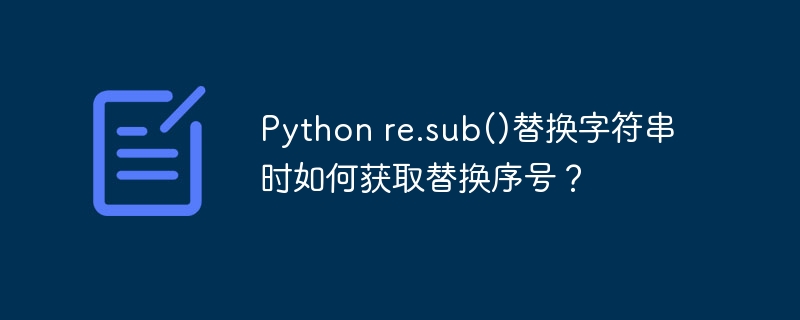
Python re.sub() 函数替换字符串并获取替换序号
re.sub() 函数本身并不直接提供替换序号。然而,我们可以通过自定义替换函数来实现此功能。 以下示例演示如何将字符串中的特定字符替换为带序号的字符:
目标:将字符串 oldstr 中的字符 “a” 替换为带序号的 “a”,例如:
oldstr = ‘abaca’ 应该变为 newstr = ‘1a2a3a’
立即学习“”;
解决方案:使用一个闭包函数来追踪替换次数:
import re def replace_with_index(pattern, replacement_str): count = 0 def replacer(match): nonlocal count count += 1 return f"{count}{replacement_str}" return replacer oldstr = 'abaca' newstr = re.sub('a', replace_with_index('a', 'a'), oldstr) print(newstr) # 输出:1a2a3a
登录后复制
replace_with_index 函数创建一个闭包,count 变量在内部函数 replacer 中被修改,从而追踪替换次数。 replacer 函数在每次匹配时都会被调用,并返回带序号的替换字符串。 f-string 格式化字符串使得代码更简洁。
这个方法比原文中的方法更清晰,避免了不必要的字符串拼接,并且更易于理解和维护。 它也更具通用性,可以轻松地修改 replacement_str 来替换成不同的字符或字符串。
以上就是Python re.sub()替换字符串时如何获取替换序号?的详细内容,更多请关注php中文网其它相关文章!
 微信扫一扫打赏
微信扫一扫打赏
 支付宝扫一扫打赏
支付宝扫一扫打赏

